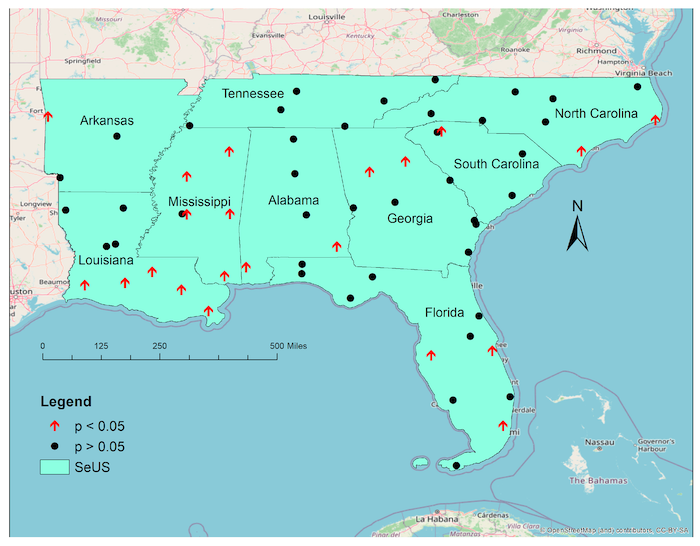
KEELLINGS – Spatial and Temporal Variability of Extreme Precipitation Events in the Southeastern United States
Mohammad Siddiqur Rahman, Jason Senkbeil, David Keellings
Article first published online: 17 August 2023
DOI: https://doi.org/10.3390/atmos14081301
ABSTRACT: Much of the Southeastern United States (SeUS) has experienced an increasing number of extreme precipitation events in recent decades. Characterizing these extreme precipitation events is critical for assessing risk from future hydroclimatic extremes and potential flash flooding. A threshold of one inch per hour (1IPH) was used to indicate an extreme precipitation event. Non-parametric tests were run to identify trends in 1IPH event frequency and locate time series change points. In the last 20 years, 1IPH events increased by 53 percent in the SeUS, and 21/61 stations recorded significant increasing trends. A change point is identified in 15/61 stations. June, July, and August are generally the peak time for 1IPH events, but Florida, Louisiana, and Mississippi recorded longer peak seasons. For the time between events, 17/61 stations recorded significant decreasing trends, implying that 1IPH events are increasing in frequency. Four teleconnection indices were positively correlated with 1IPH events. The SeUS experiences considerable tropical cyclone-induced extreme precipitation, yet only seven percent of 1IPH events overlapped with tropical cyclones. Therefore, the increasing frequency of 1IPH events is likely the result of a combination of baroclinic frontal zones or regional and mesoscale convective features. Causes for the increasing frequency of 1IPH events require further research.
Read the full publication in Atmosphere.